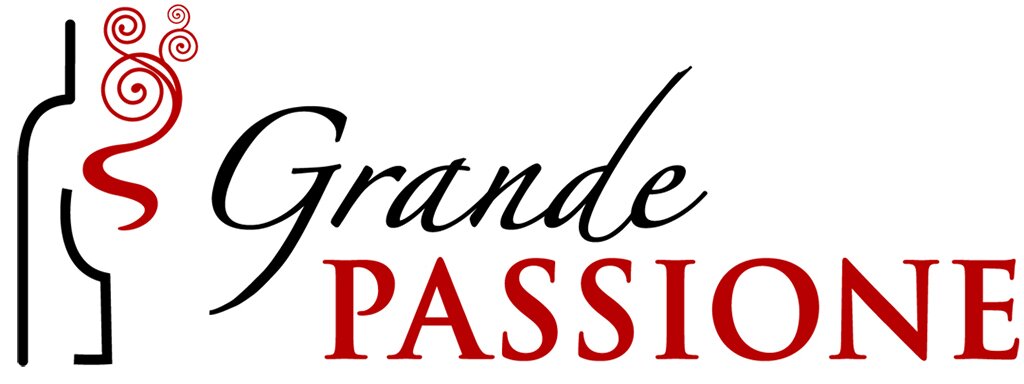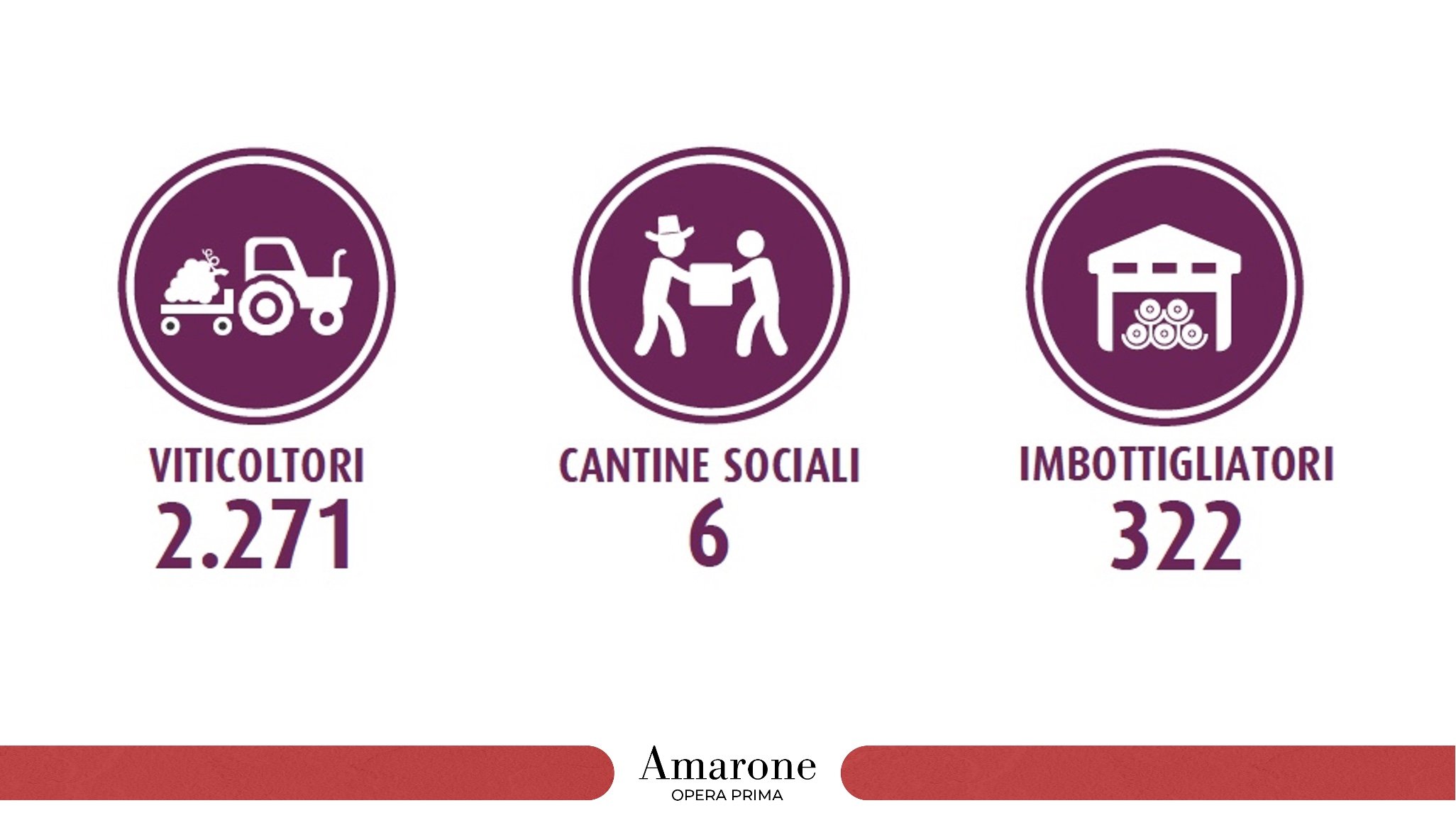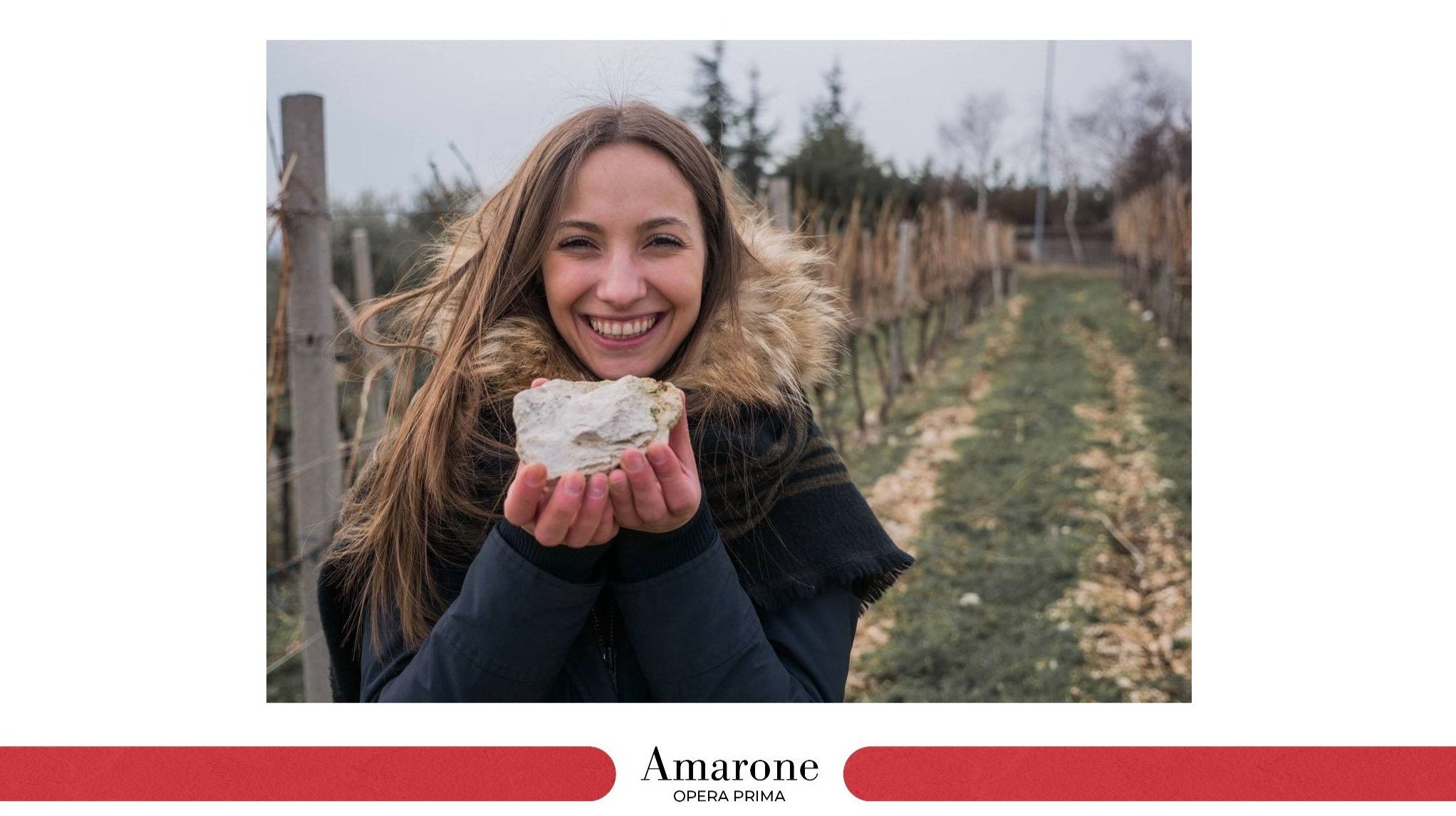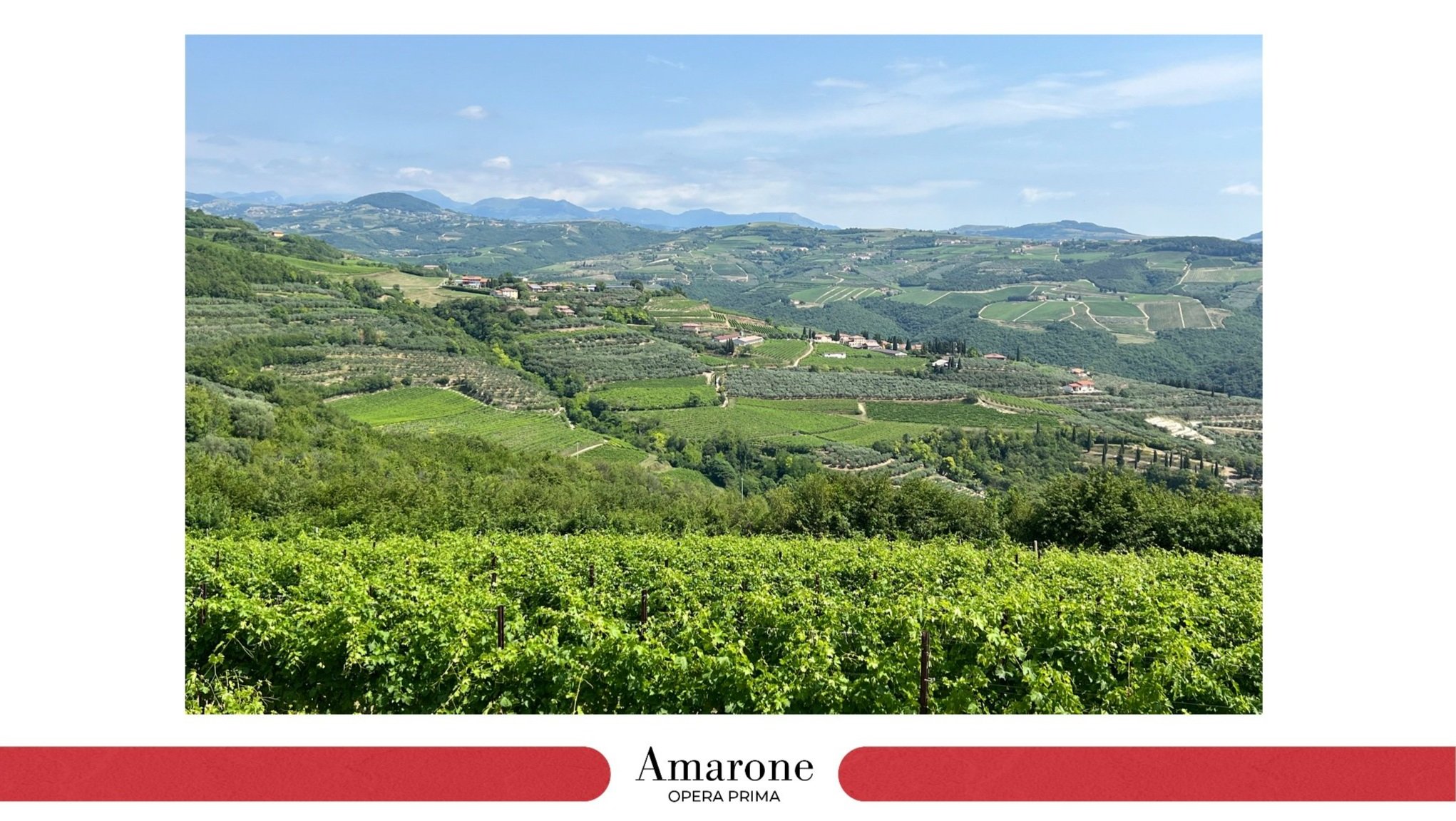Amarone… The Boom Generation, a Masterclass & a Paradigm Shift
In the context of “Amarone Opera Prima” held last June in Verona, I had a chance to present my case for the Amarone of the future. Focusing on six emblematic producers, my aim was to convince an audience of more than 100 journalists from around the world that the region is going through a generational change and seek to produce an Amarone both as an expression of place and a symbol of excellence.
My masterclasses are never conducted in the traditional sense. They are instead opportunities for me to argue my cases and present new ideas with the hope of generating discussions and exchanges of views.
The presentation held on 18 June at Palazzo Verità Poeta is no different. Instead of presenting the Amarone in terms of its history and its historical wineries, as it is (too) often done, I have decided to leave the past in the past and talk about the present and the future.
Why the “boom generation”? Because I focused on those young wineries that were created in the last 20 or so years. Those going through a generational change during these unprecedented and challenging times. In my presentation, I hoped to refocus the discussion away from the historical and redirect it squarely to the future and find inspiration from 6 emblematic producers who represent a new generation of wineries that will be the appellation's future.
In 1996, the yearly percentage of grapes at rest (Uva a Riposo) began to grow from an annual average between 4 to 8 % of total production to 10%, then 15% in 1998 and remained higher than 30% after 2006.
What is the “boom generation? On the slide above, we can see when this boom initiated. From 1972 to about 1995, the yearly percentage of grapes at rest (uva a riposo) – those used for appassimento - hovered between 4 to 8% of total grape production. In 1996 this grew to 10 %, in 1998 15% and remained higher than 30% after 2006. What happened for this trend to take hold?
In the 1990s, American wine media took a particular interest in the Amarone, publishing a series of articles highlighting the typology's uniqueness, and vital American distributors were instrumental in creating the Valpolicella icons that we know today, driving interest for the entire region.
But climate change also helped with the better maturation of fruits.
Exhaustive studies were conducted in the vineyards, especially Attilio Scienza, for a deeper understanding and the valorisation of the Valpolicella native grape varieties and their clonal selections.
Scientific knowledge both in the vineyards and the cellar became better understood, especially about the techniques of both the appassimento and “affinamento” of the wines yielding better, cleaner and fresher wines. Wines are more adapted to modern taste.
From those innovations and with the dynamism of the producers in the region, the Amarone became one of the better-known, if not the best known, Italian wines worldwide and, certainly today, one that commands the highest price on the market of bulk wine and prices of grapes in Italy, redistributing income throughout the region in a way that can only be the envy of other Italian wine regions and producing 18 million bottles yearly.
Out of 322 bottlers, those who put the wines in bottles with a label, there are about 250 who produce less than 100k bottles per year, representing more than 75% of them in thoughts, aspirations and vision.
I love the slide above. With 3 numbers, it helps us put Valpolicella in perspective. More than 2000 grape growers and more than 300 wine producers. If I challenge anyone in the room to name for me more than 20 producers, I am pretty confident that those who can do it will be in the absolute minority.
And this is where the future of the region lies.
Out of 322 bottlers, those who put the wines in bottles with a label, there are about 250 who produce less than 100k bottles per year.
Why do I highlight this point? Because most masterclasses of the past focused on the large and historical producers. The better known and the more commercially available. This created a situation where the market has a rather myopic view of the region's possibilities. I included, even after living in Verona for two years.
This myopic view of the region magnifies the misconception that only large producers, including the cooperatives, influence the region’s regulations and politics.
But when we consider the numbers, these 250 producers represent more than 75% of the region’s bottlers, if not in volume, certainly in thoughts, dreams, aspirations and vision. Suppose we in the media start to pay attention to these smaller producers, what they do, and what they aspire to. Suppose we start understanding their motivations and what gets them out of bed in the morning. In that case, we can begin to realise that they can and will have absolute power and a transformative influence over the future of the region. This is why this presentation is focused on small producers.
Until now, small producers might have operated under the radar of many of us. Producers who, with their vision and love of Valpolicella, represent today's undercurrents of the region’s realities.
They are, from east to west (with their respective wines tasted during the masterclass):
Ca la Bionda, Amarone della Valpolicella “Ravazzol” 2007
Villa Spinosa, Amarone della Valpolicella Classico 1998
Vigneti di Ettore, Amarone della Valpolicella Riserva 2012
Villa San Carlo, Amarone della Valpolicella Riserva 2016
Le Guaite di Noemi, Amarone della Valpolicella 2010
Romano dal Forno, Amarone della Valpolicella 2003
At the end of our chat, Enrico Cascella Spinosa asked: “How do we grow as a region? In volume, to be the most productive in Italy? Or in excellence, to be the best in Italy and the world?”
VILLA SPINOSA - if I needed to describe it only in one word, I would use “Bellezza”.
20 hectares + 45k bottles – began to vinify in the 1990s
My meeting with Enrico Cascella Spinosa made a deep impression on me. His passion and love for his land and his work are so contagious!
What impressed me the most is his belief, deep down to his soul, in the value of the patrimony that exists in Valpolicella, not only from its history, values and traditions but also from the sheer beauty of its landscape. He sees his work as a responsibility to recreate an authentic testimony of the roots of this territory. With an emphasis on the word “roots”, in two senses of the word: roots from the vines and, most importantly, from its traditions.
Enrico wants to make a wine that is the most faithful expression of the beauty he sees every day and produces a style of wine that was made 30-40 years ago before technology took over.
Counter-intuitively, to produce this type of wine, he surrounded himself with a group of young collaborators, many trained under Roberto Ferrarini, the respected enologist. The latter had a profound influence on the thoughts of Enrico and also many in Valpolicella, among them Beppe Quintarelli. He says the young have the spirit to create with their constant questioning. Working with them, he wants to find inspiration and also provide inspiration to them.
His property consisting of a 17th-century farmhouse and a 19th-century villa, is beautifully curated, more like a garden than that of a winery; proud to show us around, we could feel that his is a labour of love, and it reflects in the way he organised his “accoglienza” for he has a deep belief that hospitality creates memories and memories are the emotions that bind a person back to his craft and that of his team.
At the end of our chat, as we were preparing to leave, Enrico told me we must ask ourselves: how do we grow as a region? In volume, to be the most productive in Italy? Or in excellence, to be the best in Italy?
The Amarone della Valpolicella Classico 1998 we tasted was aged 18 years in Slovenian oak casks before being bottled in 2017. It is made with Corvina Veronese, Corvinone, Rondinella and Molinara.
Romano Dal Forno believes that traditions are important but that each generation adds something new. He expects his sons (Luca, Marco and Michele), who are now taking over, to do the same.
ROMANO DAL FORNO – in one word, “self-confidence”.
13 hectares under ownership plus 25 under rental + 45k bottles
He worked under Beppe Quintarelli for some years, then on his own since 1990
Building works at his current property were completed in 2008.
I will never forget meeting Romano dal Forno for the 1st time. Last December, during a visit with the team Consorzio. He a big, physically and spiritually, a man with self-confidence that I rarely see in anyone.
It should not have been a surprise as he led, in his way, a revolution in the region, producing today one of the world's most well-known and coveted wines.
As we walked through his state-of-the-art winery, he told us: “everything changes constantly; this is the nature of life and this world we live in. Therefore, we must constantly adjust and adapt and constantly learn and innovate.”
He believes that traditions are important but that each generation adds something new. He expects his sons (Luca, Marco and Michele), who are now taking over, to do the same.
His mission is to receive the same plaudits as the best French wines and create a symbol for the region.
This drives the technical evolutions of the past and will continue in the future. He believes in reductive winemaking to avoid all costs of contamination and oxidation during each step of the wine-making process. He wants his wines to be fresh, intense, with long ageing potential and avoid volatile acidity like the plague! He has achieved this evolution through, as he said, tiny steps designed to yield maximum effect and efficiency.
When we asked what advice he would give to young producers, his response did not surprise me: branding is the key. Sommeliers need a story to tell, and that story is not in the technical aspects of the wines. Stories that inspire are not found in what one does but in why one does it.
On a side note, what is remarkable about dal Forno is that he is one of the few producers in Italy who has all 3 of his wines listed in the Liv-ex top 100 most traded Italian wines from 2002 to 2019. Not bad for a producer from an area of Valpolicella that is (or was) off the beaten path!
The Amarone della Valpolicella 2003 spent three years in 100% new oak. It is made from Corvina, Rondinella, Croatina, and Oseleta.
Alessandro Castellani: “Amarone must be complex, elegant, refined, balanced concentration to age and fully expressive of where it comes from – a terroir wine”.
CA LA BIONDA – in one word, “pragmatic”.
29 hectares (from 3 hectares in 2000) + 120k bottles – since the 1990s
Although we featured his wines at several important events when I was still living in Hong Kong, I had never met Alessandro Castellani, who is in charge of winemaking (his brother Nicola handles the vineyards). Due to scheduling issues, we had to meet during a telephone conversation to research this presentation. Even so, Alessandro made a deep impression on me.
What impressed me the most was his rationality, pragmatism and clear-sighted vision of the region and the Amarone.
Right from the start, he said: “We must think of Amarone as an important wine”. It must have the ageing ability; it must be rare, the best of the best in Valpolicella – and be valued as such”.
“The beauty of Amarone, he continued, and perhaps the reason for his success, is that it is universally liked”. He quickly added, “it does not mean that Amarone should be an “everyday drinking wine”. It must be complex, elegant, refined, balanced with concentration to age and fully expressive of where it comes from – a terroir wine”.
His philosophy is a maniacal attention to acidity and thinks the Amarone should use only traditional grapes raised with pergola, with the best grapes coming from the hills from soils with low Ph. The key is to manage the harvest date and the length of the appassimento with a drying process as natural as possible so that the character of the wine in a particular vintage also reflects the drying conditions during that vintage.
The Amarone della Valpolicella “Ravazzol” 2007 use Corvina, Corvinone, Rondinella and Molinara. It was aged for 36 months in 3000-litre oak casks.
Noemi Pizzighella told me, "small wine producers must be confident in telling their stories and not be afraid to talk about their passion, fears, and sacrifices.”
LE GUIATE DI NOEMI – how to describe Noemi in only one word? If I must, I use two: “pure passion.”
4 hectares + 25k bottles - since 2002
Meeting Noemi Pizzighella is to feel her tremendous energy immediately. Like a volcano on the verge of a great eruption. Courageous and out of sheer love, she took over the family's winery management at a very young age and today has an unshakable vision of where she wants to go. Our meeting was inspiring!
She told me that the key to Amarone is to understand deeply what its essence should be. It must be crystal clear what the vineyards can produce and how the appassimento will react to the specific raw materials one has to work with and to courageously make a wine that reflects its essence and points of difference.
Then, she continued, “it is to embrace that identity and learn how to communicate it with courage. The courage to accept “the wine might not be for everyone and that only a certain type of wine lover will love what I love.”
She told me, "small wine producers must be confident in telling their stories and not be afraid to talk about their passion, fears, and sacrifices.” In this sentence, she expressed the very essence of storytelling: which is not the telling of stories but rather the generation of emotions. And emotions come from understanding the values, the beliefs and the passion that drives the producer to do what they do.
“After all,” she told me”, the appassimento process concentrates everything, not only the sugars in the grapes but also the characteristics of the vineyards they come from. So, we must let our wines reflect those”.
When I asked her how she sees the future of Amarone, she replied that it is in the hands of the young generation who, unlike their parents and grandparents, are eager to meet each other, confront, discuss and cooperate to generate new ideas and build a better future for the region.
The Amarone della Valpolicella 2010 is made from corvina, rondinella, corvinone, Oseletta and Croatina. It aged 36 months in french oak barriques
“The aim”, young Gabriele told me, “should be to make a wine with great respect. Respect the vineyard and let them express site and their characteristics”.
VIGNETTI DI ETTORE – in one word: “paradiso”
15 hectares + 70k bottles – since 2012
Driving to their property, I almost took the ditch twice, so much I was awed by the landscape. But that was a prelude to the sheer beauty of their property on the hills overlooking the nearby valley. I thought I had reached paradise…
During our chat with Gabriele Righetti, the young gun in charge of winemaking, and his father, Giampaolo, in charge of the vineyards, it became clear why I had had such an impression. Their attention to detail and systematic approach are at the highest level in the vineyards and the winery.
They believe the strength of Valpolicella today is in the small producers and growers born here, owning their land and not coming from other industries. They are very dynamic and family-owned, growing in the region with the region.
Part of this success, Giampaolo told me, is that income is generally well distributed in the Valpolicella. Not only among large and small producers but also among growers who can earn a decent living today - I researched this point and discovered bulk wine for Amarone in the markets reaches the highest price in Italy and its grapes the 3rd highest.
Giampaolo believes this multiplicity offers an excellent opportunity for the region, and each can clearly express its interpretation of Amarone with its grapes.
Gabriele added that “complementing to these strengths is that the young generation is not afraid to “fare Squadra” (play in the same team), tasting each other’s wines, confronting their beliefs and have discussions to learn and evolve.
“The aim”, Gabriele continued, “should be to make a wine with great respect. Respect the vineyard and let them express site and their characteristics”.
Giampaolo added that this is why they use only traditional grapes, and we have been returning to using the pergola because it helps us obtain better-balanced raw materials”.
Gabriele added, “we want to produce a terroir Amarone for which the appassimento and the “affinamento” plays a role in the background so that our wines are fine wines of longevity but also drinkability with elegance and in the right proportion”.
The Amarone della Valpolicella Riserva 2012 is made from Corvina, Rondinella, Corvinone, with some Pelara. It aged 7 years in Slavonian oak casks.
In the words of Antonia Pavesi (left): “the Amarone must be a terroir wine when the method of appassimento and affinamento remains subtly in the background providing a sense of tradition but withdrawing at a certain point”.
VILLA SAN CARLO – in one word: "artists."
23 hectares but 5 of them are used for their wines – 35k bottles
Owned by the Pavesi family and supervised today by Marco Signorini.
Looking at their 17th-century villa on top of mount Martinelli through the large windows of their stunning hospitality centre in a historical industrial site at the fringe of Montorio was awe-inspiring. We could see 70 hectares of their property divided into 40 plots intermixed with forest.
“Our secrets lie in the number of parcels we can select grapes from”, Marco Signorini, the very young enologist in charge of a young winemaking team for the last three years, told me. “it provides for me many options when it comes to making the wine, just like the artist who has a great number of colours to choose from to produce a work of art”. He continued, “when I look at this landscape, it reminds me of a garden, and so you will not be surprised the hear that I aim to express the floral and perfumed aspects of Amarone”.
Antonia Pavesi, who with her sister Cristina work alongside their father Gianni, told me that for them, the key to the future is to respect traditions but constantly research and experiment” we want to obtain the true essence of our land, our vineyards and varieties”.
For Marco, the key to Amarone is to obtain a wine of outstanding balance, drinkability and elegance. When I asked him what he meant by drinkability, he replied, “freshness and proportion.”
He continued, “we are constantly working on a more precise understanding of each parcel and a return to traditional grapes with a replanting program in some plots with complete dedication to the conventional pergoletta system. Through a natural drying process and long cold fermentation in the cellar, we want to maintain as much freshness as possible.
Marco tells me: “the Amarone must be a terroir wine when the method of appassimento and affinamento remains subtly in the background providing a sense of tradition but withdrawing at a certain point”.
When asked about the future of Amarone, echoing others in this presentation, Marco replied that it “lies with the young generation who are willing to share and confront with each other to collaborate and resolve some of the confusion that exists today in the appellation”.
The Amarone della Valpolicella Riserva 2016 is made with Corvina, Corvinone, Rondinella and a small percentage of other grapes. It spent 36 months in a mixture of French oak tonneaux and 10 and 20 hl casks.
What I tried to demonstrate is that, as we go off the beaten path and reach out for the smaller realities in the region, the 250 or so who produce less than 100k bottles per year, we discover common traits that are the future of the area:
- They deeply love their land, beauty, and traditions.
- They are committed to making an Amarone that respects and celebrate that land and patrimony with proportion and drinkability.
- They want the Amarone to be an “important” wine, a symbol of Valpolicella, considered among the best in the world.
- The young generation wants to collaborate, confront each other with an open mind and learn from each other, constantly exploring the possibilities.
Through my research over the last two years to prepare for various seminars on behalf ot eh Valpolicella Consorzio, I believe these smaller realities combined, even as they might not dominate in terms of production volume, can undoubtedly dominate in terms of ideas. They can (and must) push ahead for a fundamental regional transformation. It is up to us in the media, as influencers, to reach out, focus our attention on them and give them the voice they need to effect the changes they seek and help ensure that the Amarone all over the region rally behind their unified vision as an Amarone expressive of place with freshness and elegance, and an important symbol of excellence not only in Valpolicella but also in Italy and the world.
The masterclass aimed to find inspiration from 6 emblematic producers who represent a new generation of wineries that will be the appellation's future.












